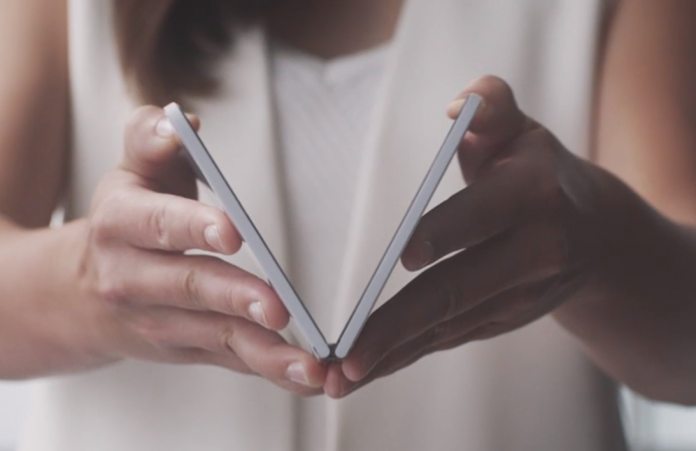That R&D has been centered on Microsoft Patents that show the company wants its dual screens to become more advanced. In the latest patent, discovered by Windows Latest, Redmond shows how it plans for dual screens to be used together or separately. As we have seen in several other Microsoft Patents, the idea is focused on magnets. Microsoft filed the patent back in November 2018. “The description relates to devices that can include first and second portions. A virtual magnetic hinge assembly can rotationally secure the two portions yet a user can separate the device portions as desired. “One example can include a first elongate magnetic hinge assembly encapsulated in a first end of the first portion and a second elongate magnetic hinge assembly encapsulated in a first end of the second portion. The first and second elongate magnetic hinge assemblies can bias the first ends together while allowing the first and second portions to be rotated through a range of rotations.”
Virtual Hinge
Future Surface Duo devices could leverage magnets laid across one edge to connect two tablets. Firstly, this would allow the kind of form factor where users can position the screen in several stances (open, laptop, closed, tablet, etc.). This is essentially the same kind of virtual hinge we discussed earlier this month. It certainly seems Microsoft is committed to using a magnet for future hinges on Surface products. In the newly discovered patent, Microsoft says such a system would mean no dust can enter the mechanism and two sides could be separated. You can check out the full patent here.




